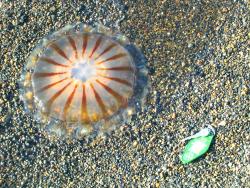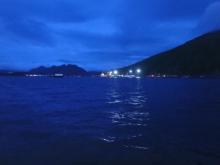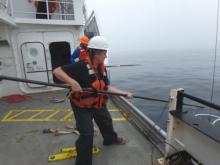Update
Now Archived! PolarConnect event with Lee Teevan and Mary Beth Decker from the R/V Oceanus out of Dutch Harbor, Alaska on 3 August 2017. You can access this and other events on the PolarConnect Archives site.
What Are They Doing?

This project will estimate the age structure and age-specific abundances of the predominant jellyfish in the Bering Sea, Chrysaora melanaster, in order to understand how their population size changes with time. The ultimate goal is to estimate the reproductive capacity and success of this jellyfish in relation to climate variability and to investigate the potential for jellyfish population increases to become a recurring pattern in the Bering Sea under future climate scenarios. In the Bering Sea ecosystem, key questions are whether increases in jellyfish abundance are a recurring phenomenon under climate change and fishing pressure and how these population increases affect ecosystem structure.
Where Are They?

Latest Journals

Mary Beth Decker is a Biological Oceanographer and Ecologist specializing in the influence of ocean conditions on the distribution, abundance, and behavior of marine predators. Mary Beth works on plankton-consuming predators of the Bering Sea ecosystem, in particular jellyfish and forage fish. She is particularly interested in how climate variability influences jellyfish populations, and how jellyfish blooms in turn affect food webs via predation and competition. She teaches three courses at Yale: Biological Oceanography, Coastal Ecosystems in a Changing World, and Caribbean Coastal Development.

Hongsheng Bi is a Biological Oceanographer specializing in the fine-scale spatial distributions of different marine organisms and their trophic interactions. Hongsheng deploys advanced optical and high-resolution sonar imaging systems to quantify the spatial distributions and overlap of plankton, forage fish and jellyfish. He is particularly interested in how jellyfish affect the spatial and temporal dynamics forage species. Hongsheng’s group operates a towed zooplankton imaging system (PlanktonScope), two adaptive resolution imaging sonar (ARIS) systems and a time-resolved Tomographic Particle Image Velocimetry at the Chesapeake Biological Laboratory, University of Maryland Center for Environmental Science.





